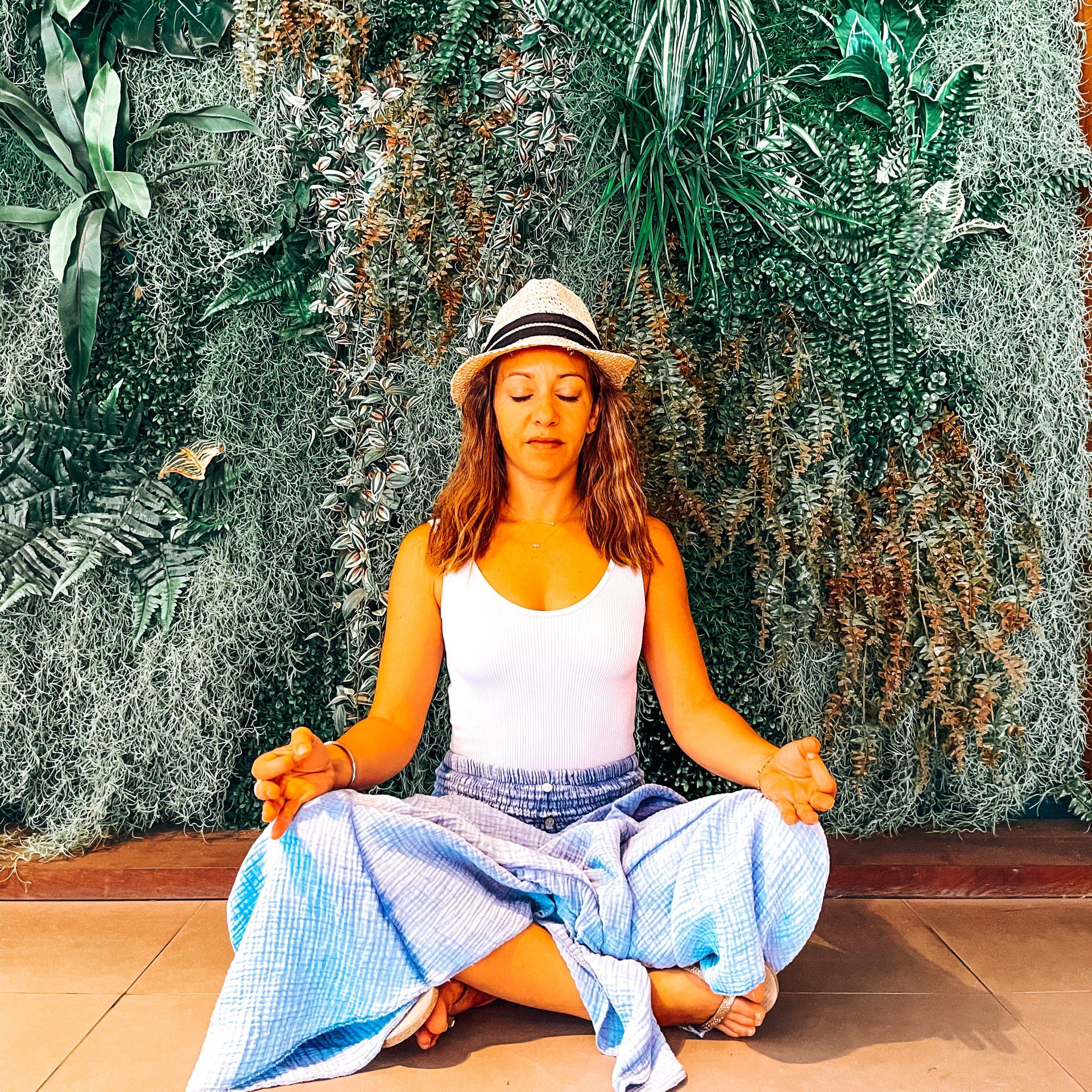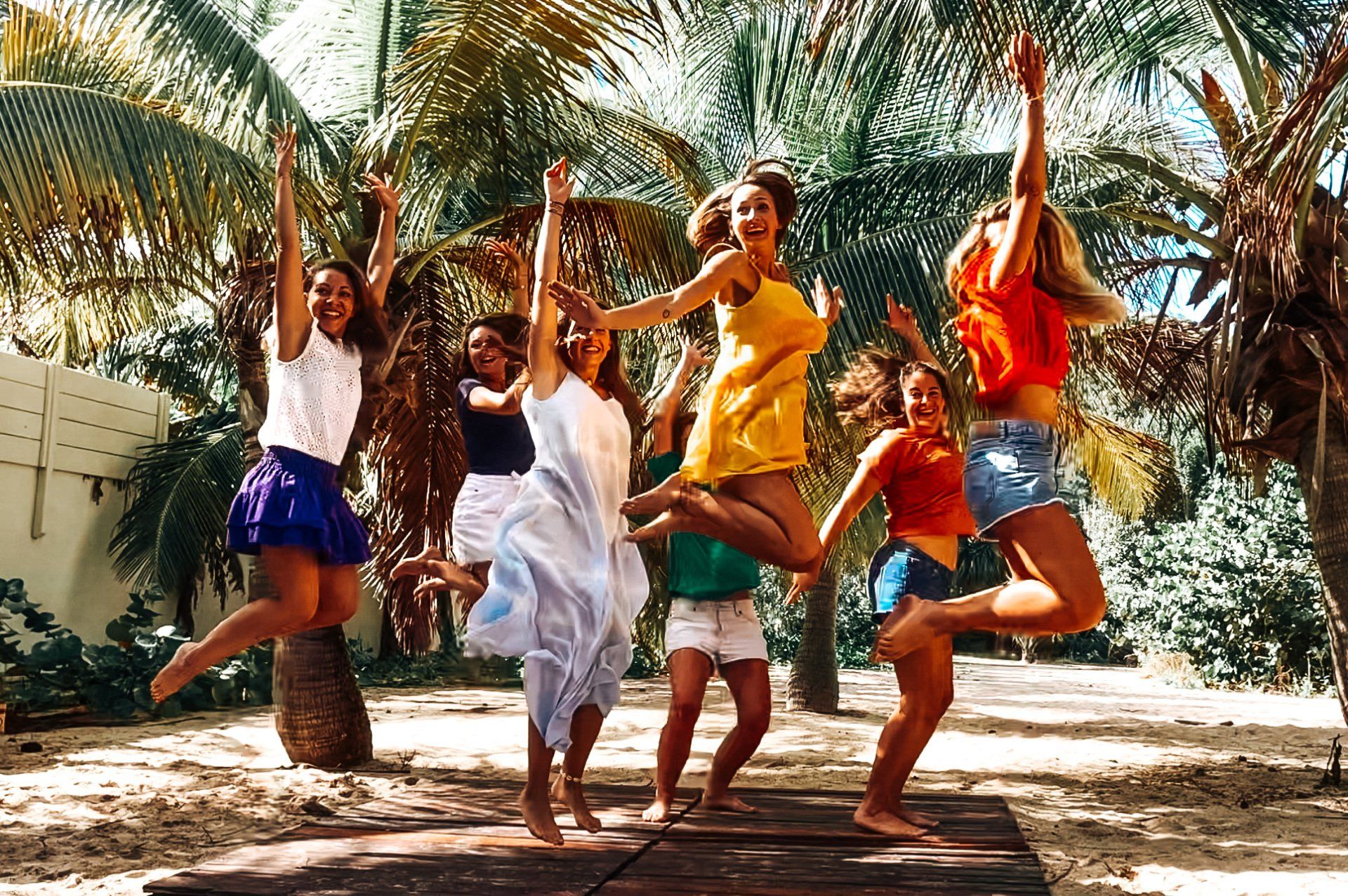🌿 What if we started gently?
🌿 What if we started gently?
🧘♀️ Understanding the Beginner's Mindset
Before planning your class, take a moment to step into the shoes of someone walking into a yoga studio for the first time.
Here’s what they might be feeling:
- Physical fears: not being flexible or strong enough, fear of injury.
- Emotional hesitation: fear of being judged, doing it “wrong,” not belonging.
- Mental overload: struggling to follow instructions, remember names, or stay focused.
A beginner class isn't just about "easy" poses — it’s about whole-person guidance: body, breath, and mind.
🤍 1. Create a Safe and Welcoming Environment
The foundation of your class isn’t the first pose — it’s the way you greet your students.
Here are a few simple yet powerful tips:
✨ Before the class:
- Greet everyone with a smile. Use their names if possible.
- Ask if they’ve practiced before and if they have any injuries or concerns.
- Remind them that everything is optional — there’s no pressure to perform.
✨ During the class:
- Slow down. Allow time to explore, feel, and understand.
- Celebrate effort, not perfection.
For example: “It’s not about how far you go, it’s about how deeply you listen.” - Observe without judgment. Guide without forcing.
✨ After the class:
- Stay available for questions and connection.
- Encourage consistency without pressure:
“What matters most is how you feel after class, not what you achieved during it.”
🧱 2. Structure a Progressive and Supportive Class
Here’s a gentle structure designed to support learning and embodiment:
🔹 Phase 1: Grounding
Goal: bring awareness to the breath and body.
Format: seated, lying down, or in any comfortable position.
Start with a few minutes of guided breath, stillness, or a body scan.
🔹 Phase 2: Warm-Up
Gentle joint mobility, breath-to-movement flows.
Goal: release tension, connect breath and body, prepare for effort.
🔹
Phase 3: Core of the Practice
Choose 4–6 simple, meaningful poses and adapt them with:
- props (blocks, straps, cushions),
- slow, logical transitions,
- moments to pause and observe.
Favor grounding standing poses (Warrior II, Triangle, Chair),
gentle floor poses (modified Downward Dog, Cat/Cow, Sphinx),
and include regular rest (Child’s Pose, short Savasanas).
🔹
Phase 4: Cool Down
Passive stretches, breathwork, and guided relaxation.
Goal: integrate sensations and end on a soft, nurturing note.
⚠️ 3. Common Pitfalls to Avoid
Even with the best intentions, certain teaching habits can create discomfort or confusion for beginners.
Here are a few to watch out for:
- Rushing: give time to feel, breathe, and process each cue.
- Over-correcting: too much alignment detail can overwhelm.
- Using too much jargon: skip the Sanskrit and anatomy lingo — use clear, visual language.
- Staying on your own mat: move around, be present, observe and connect.
- Forcing physical adjustments: prioritize verbal cues and always offer alternatives.
💡
4. Practical Tips to Teach with Clarity and Compassion
- Speak slowly and clearly. Leave space for integration.
- Use visual metaphors (e.g. “Lengthen your spine like you’re creating space between each vertebra”).
- Gently guide breath awareness without forcing a rhythm.
- Validate sensations — even when they don’t match your plan.
- Celebrate consistency over performance. Yoga is a practice, not a test.
✨
Teaching Beginners Means Returning to Yoga’s True Essence
As teachers and guides, we hold a great responsibility:
to offer a beginner their first meaningful encounter with yoga.
Every beginner is a future practitioner — perhaps even a future teacher.
The experience you offer today shapes the path they’ll take tomorrow.
So let’s slow down. Let’s listen.
Let’s teach a yoga that breathes.
A yoga that doesn’t aim to impress,
but to nourish.
📚 In Summary
- Teaching beginners means embracing patience, simplicity, and clarity.
- It requires real pedagogy, adaptability, and present-moment awareness.
- The goal? Create a space where everyone feels welcome to explore, breathe, and — most importantly — return.
🔗 Want to Go Further?
🧠 Ready to refine your teaching skills and design even more thoughtful, beginner-friendly classes?
Check out our article “Smart Yoga Starts Here” — all about anatomy, safety, and conscious cueing.
🪷 Or dive into our professional training programs, designed for mindful, embodied, and empowering teaching:
👉 Discover all our courses on
YogaDanse.eu
💬 What are your favorite tips for supporting beginners with grace and ease?
Let us know in the comments or come chat with us on Instagram!
Namaste 🪷






